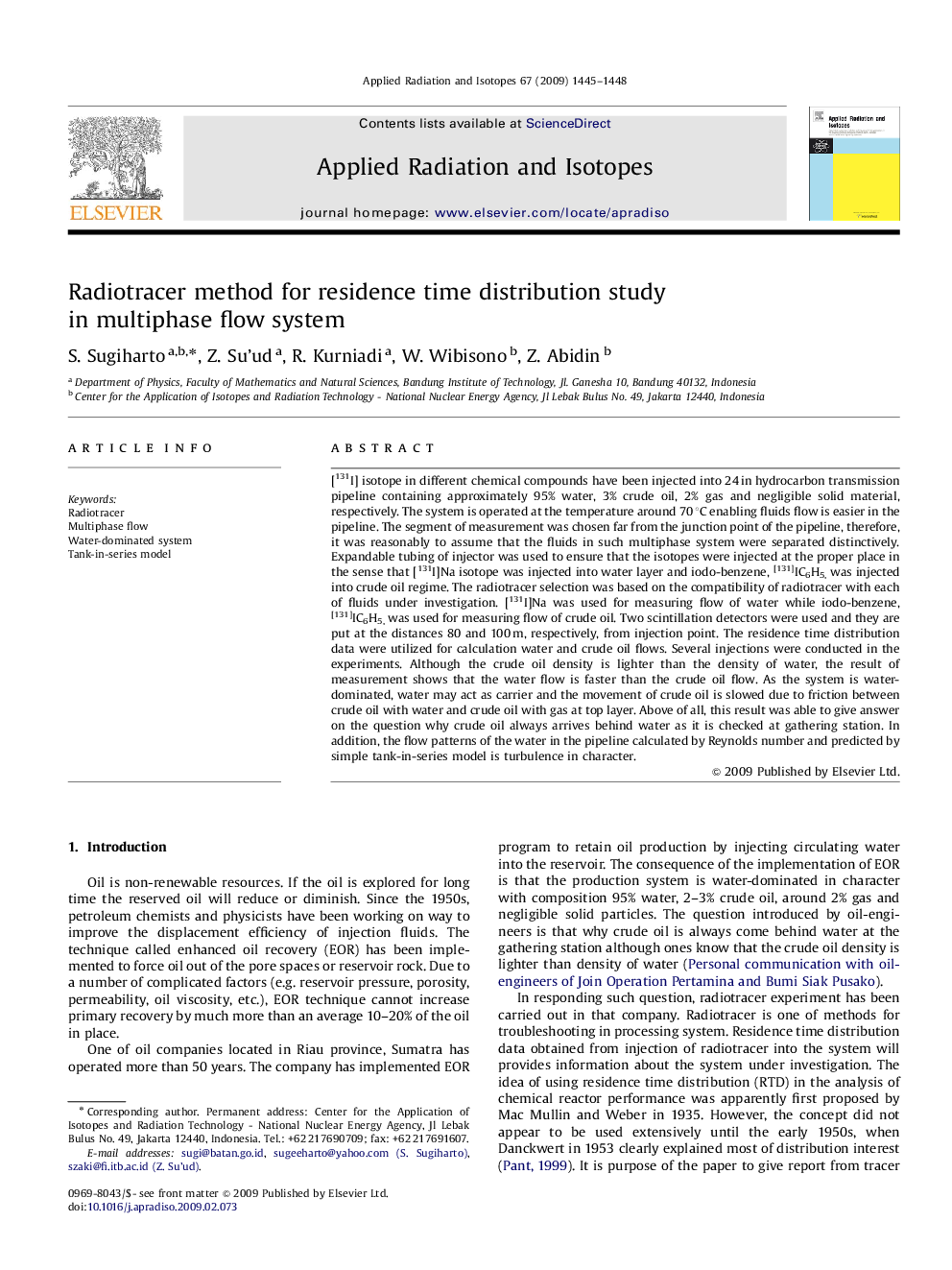| Article ID | Journal | Published Year | Pages | File Type |
|---|---|---|---|---|
| 1878186 | Applied Radiation and Isotopes | 2009 | 4 Pages |
[131I] isotope in different chemical compounds have been injected into 24 in hydrocarbon transmission pipeline containing approximately 95% water, 3% crude oil, 2% gas and negligible solid material, respectively. The system is operated at the temperature around 70 °C enabling fluids flow is easier in the pipeline. The segment of measurement was chosen far from the junction point of the pipeline, therefore, it was reasonably to assume that the fluids in such multiphase system were separated distinctively. Expandable tubing of injector was used to ensure that the isotopes were injected at the proper place in the sense that [131I]Na isotope was injected into water layer and iodo-benzene, [131]IC6H5, was injected into crude oil regime. The radiotracer selection was based on the compatibility of radiotracer with each of fluids under investigation. [131I]Na was used for measuring flow of water while iodo-benzene, [131]IC6H5, was used for measuring flow of crude oil. Two scintillation detectors were used and they are put at the distances 80 and 100 m, respectively, from injection point. The residence time distribution data were utilized for calculation water and crude oil flows. Several injections were conducted in the experiments. Although the crude oil density is lighter than the density of water, the result of measurement shows that the water flow is faster than the crude oil flow. As the system is water-dominated, water may act as carrier and the movement of crude oil is slowed due to friction between crude oil with water and crude oil with gas at top layer. Above of all, this result was able to give answer on the question why crude oil always arrives behind water as it is checked at gathering station. In addition, the flow patterns of the water in the pipeline calculated by Reynolds number and predicted by simple tank-in-series model is turbulence in character.
